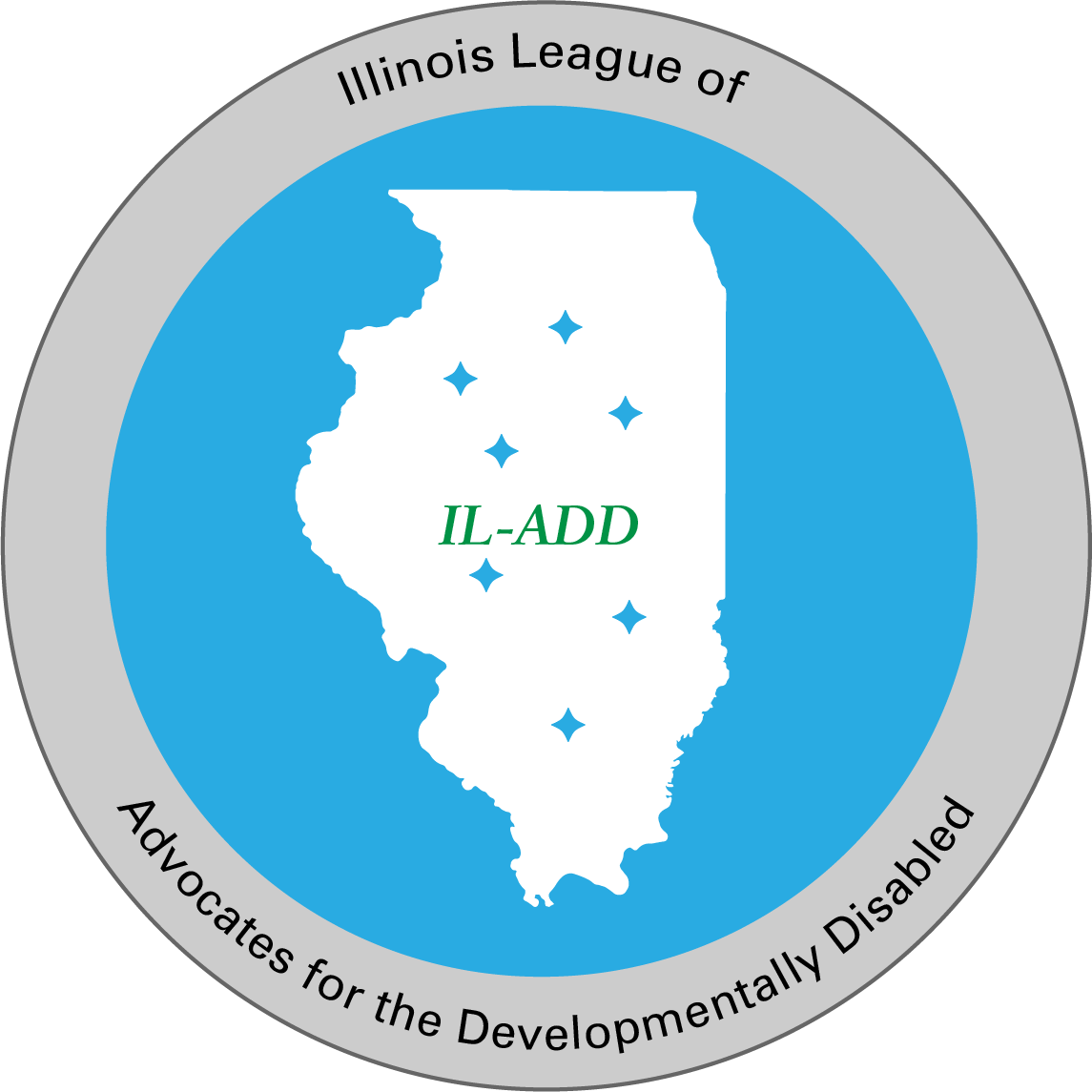Rita was President of ILADD from its incorporation in 1996 through 2015, just short of twenty years. It is composed of some of the finest, most dedicated and courageous people I know, including our members who are no longer with us.
The Illinois League of Advocates for the Developmentally Disabled (ILADD) is composed of the presidents and other key people from the family/guardian organizations of Illinois’ State Operated Developmental Centers (SODCs) as well as family/guardians of people served in community settings. ILADD supports a full continuum of quality services and settings so that every person with a disability receives the appropriate level of care. This is key to our advocacy. Though we advocate for all service settings, we particularly focus our support on our State Operated Developmental Centers, like Choate, Shapiro, Fox, Murray, Ludeman, Mabley and Kiley because SODCs are at greatest risk of closureand because that high level of care is desperately needed for people with intellectual disabilities which are complicated by severe physical and/or behavioral disorders.
Why are SODCs at risk? Illinois has a history of inadequate funding for DD services which creates stile competition for it. Where disability advocates should be united, they are instead fighting over the same inadequate pot of funds, with the vain assumption that withdrawal of funds from one service type will allow proportionate increase of funding for another service type, which has never been the case. Some oppose any congregate care setting for philosophical reasons and their agendas show up in policy and legislation. Some of those people fill state and federally funded positions in Illinois, like the Illinois Council on Developmental Disabilities (ICDD) and our protection and advocacy agency, Equip for Equality (EFE), among others.
Just to clarify the terms SODC and ICF/DD. Both are highly supportive Intermediate Care Facilities for the Intellectually/Developmentally Disabled. An SODC is state owned and operated. The term ICF/DD is usually meant to refer to state funded but privately operated centers. Both are characterized in law and policy as “institutions.” The alternative to DD institutional care is called the “community.” Community settings, for now, include CILAs, which stands for Community Based Living Arrangements, all the way to private home based settings. There is a constant battle between people like us who support the full array of service settings, including institutions and “community only” advocates who hope to see all institutional settings close.
I’ve been asked to give some highlights of ILADD’s activity over the years -what it has supported and what it has been required to fight. The examples below are very selective because over those twenty plus years, ILADD has tried to be at every policy table on a myriad of issues. As lopsided as advocacy representation has been in most policy settings, with a handful of “full array” advocates to a roomful of “community only” advocates, we have made our voices heard and have survived.
It is important to start with a very brief overview of the Supreme Court case, Olmstead v LC because it underlies all DD policy since it was decided.
Olmstead v LC Olmstead
Olmstead, decided in 1999, is considered the most important civil rights decision for people with disabilities in our country’s history. ILADD supported the amicus brief of the national organization, VOR, from which important language was adopted. In a nutshell, Olmstead holds that people ith disabilities have a qualified right to receive state funded supports and services in the community rather than in institutions and that unjustified institutionalization of people with disabilities is discrimination under the Americans with Disabilities Act. Some community only advocates and agencies choose to acknowledge this language only and ignore the three conditions the Supreme Court determined must be in place before an individual is removed from institutional care:
- The person’s treatment professionals determine that community supports are appropriate.
- The person does not object to living in the community.
- The provision of services in the community would be a reasonable accommodation when balanced with other similarly situated individuals with disabilities (i.e., the state can afford it).
ILADD correctly interprets this decision to support choice of service settings for qualified individuals. However, opponents of congregate care have repeatedly used Olmstead as a directive to close institutions and move people to the community. In many cases across the country, Olmstead is used as justification for an all out war on congregate care settings.
Next “Major Battles from 2000 to 2010”
